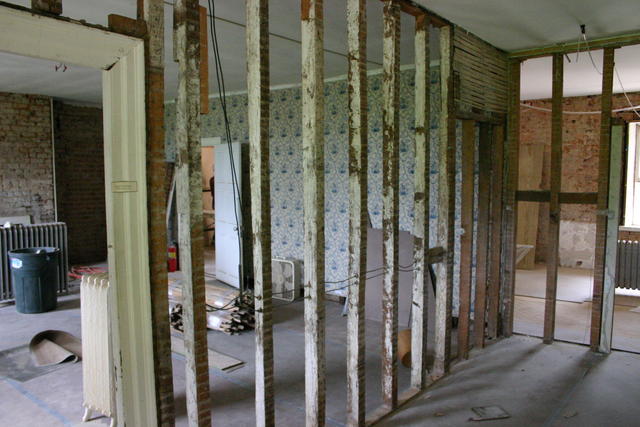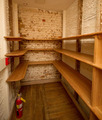
Due to a careful inventory of the fragments removed from the location of the ca. 1797 closet during the deconstruction phase of the Restoration, the Restoration Team was able to make a remarkable discovery. When the restoration carpenters were demolishing the partition wall that was built in the Upper South Passage in ca. 1880, they discovered that several of the studs were hand-hewn and pit sawn. Hand hewing and pit sawing were used to produce framing materials until the early-to-mid 19th century when water-powered lumber mills became common. Because they were hewn and pit-sawn, the carpenters knew that they had to pre-date ca. 1880 and so were most likely Madison-era material. Like all possibly Madison-era material that had to be removed during the restoration, the studs were set aside to be inventoried with the rest of the Madison-era architectural fragments found during deconstruction.

©The Montpelier Foundation
|
|
A ca. 1880 partition at Montpelier that reused studs from the ca. 1797 Upper North Passage Closet. |









